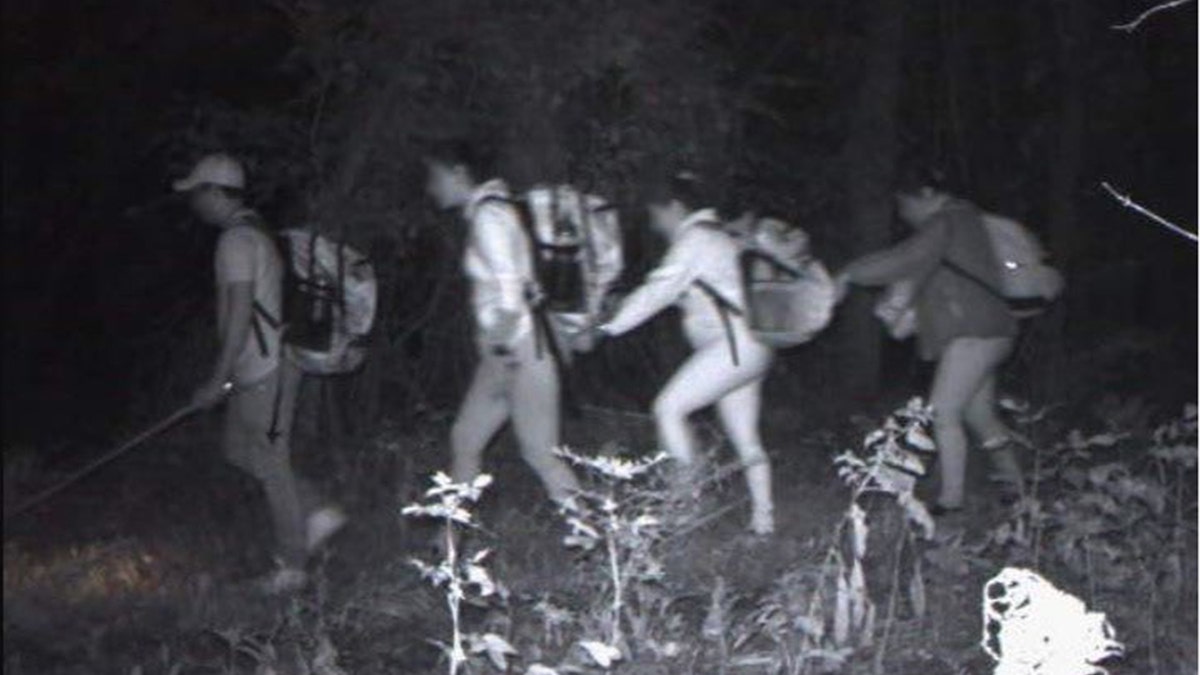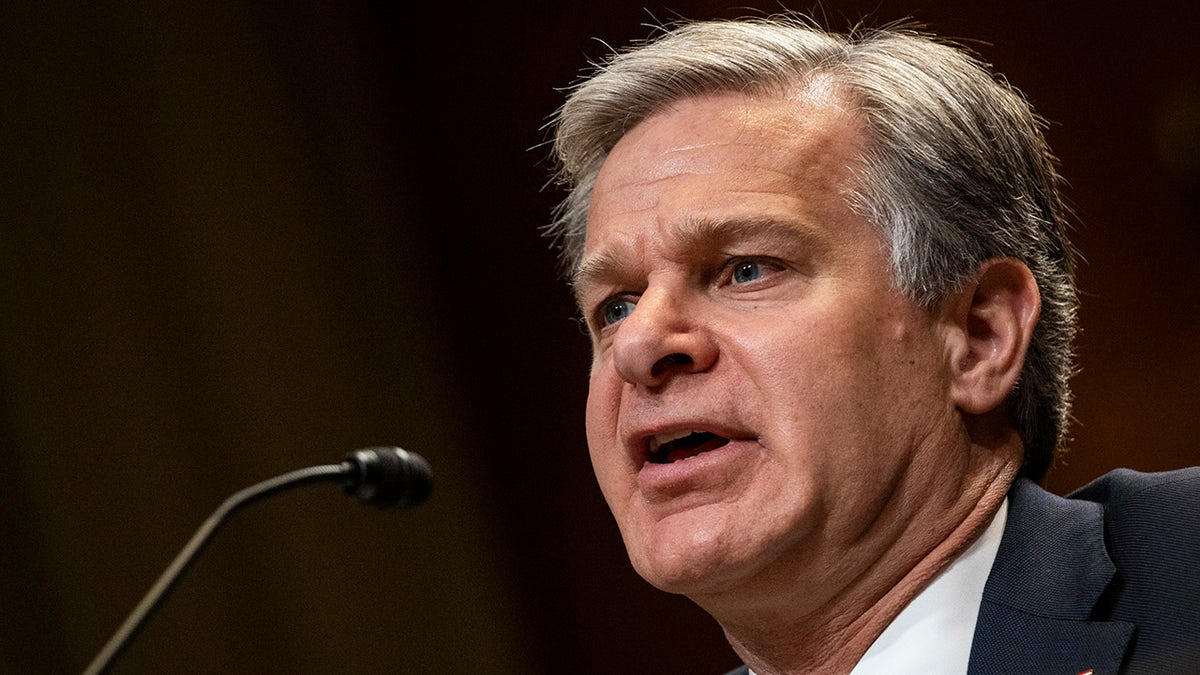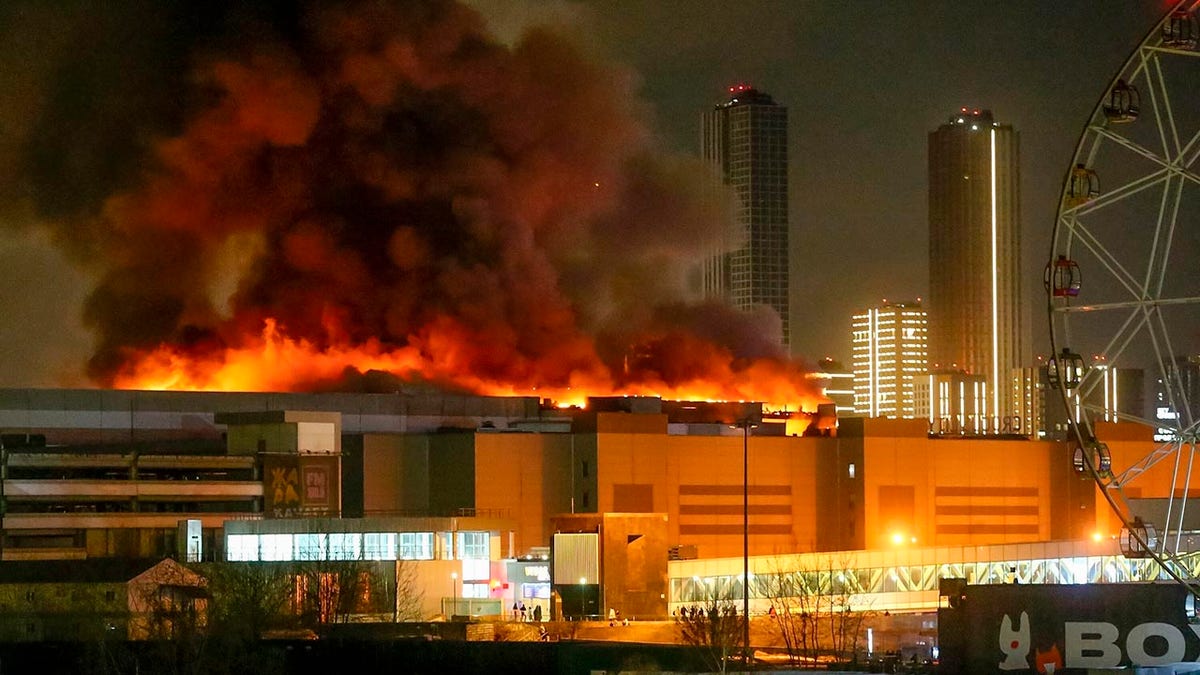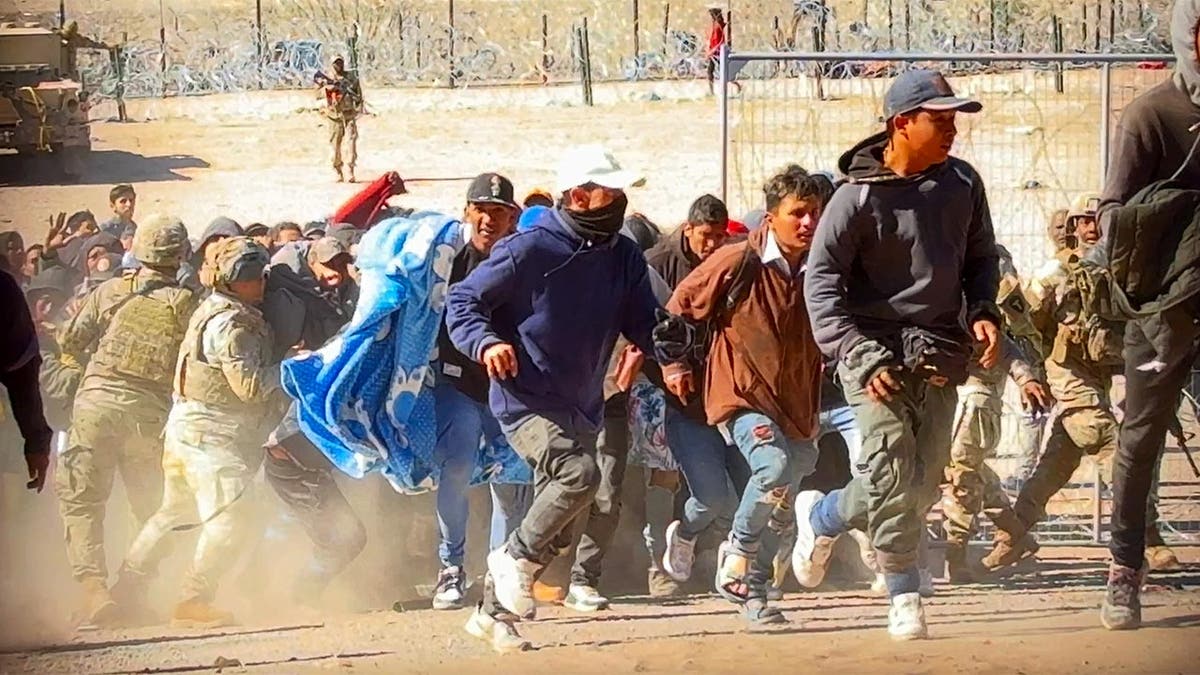The threat of a major terror event taking place on U.S. soil is at a dangerously high level with big cities like New York City and Washington, D.C. most vulnerable to an attack, terror experts are warning.
It’s been over 23 years since nearly 3,000 people perished on 9/11, but even though surveillance and airport security has been beefed up, the world has changed considerably since then.
Technology has become cheaper and more advanced, the internet is lightning fast and America’s open border means millions of unvetted people from all over the world are now living among the general population and continue to pour in at record rates.
Smoke pours from the twin towers of the World Trade Center after they were hit by two hijacked airliners in a terrorist attack on Sept. 11, 2001 in New York City. Experts are warning the threat of a major terror attack is very high. (Robert Giroux/Getty Images)
“We are in a period where a number of factors are combining to make a terrorist attack on the homeland far more likely than it perhaps had been,” says Paul Mauro, a retired NYPD inspector who worked in counterterrorism for nearly 15 years.
Mauro said the risk of a potential new attack should be assessed in a criminal context – who has the means, motive and opportunity to successfully execute a deadly plot.
“The world has gotten a lot smaller since 9/11. You’ve got drones, the interconnectivity of the internet is more ubiquitous into areas that maybe didn’t have that connectivity. You can get an uplink using something like an Elon Musk satellite. You can get online from the mountains of the Hindu Kush, you’ve got AI capabilities, you’ve had all that time to develop capabilities since 9/11 if you are still in the [terror] business.”
Mauro said that threats would likely emanate from current hot spots around the globe, including the Middle East, where Iran is a live threat and is still seeking revenge for the killing of Qasem Soleimani, an Iranian major general who was taken out in a 2020 U.S. drone strike.
Those angered by Israel’s response to the Oct. 7 attacks in Gaza also pose a real threat, as does a “nuclear capable” Russia, which has been battling against a U.S.-funded regime in Ukraine, Mauro said.
“We are in a period where a number of factors are combining to make a terrorist attack on the homeland far more likely than it perhaps had been.”
“It’s not hard to see motives all over the place, motives that preexisted 9/11 and that continue and have only been exacerbated,” he said.
Mauro said the opportunity for terrorists lies at the southern border.

Migrants are seen crossing the northern border. (Customs and Border Protection)
“We’ve let 10 to 20 million illegals into the country with little or no vetting. It’s a canard to think that they’re all just from small towns in Mexico or Bolivia or Ecuador or something,” Mauro says.
“We’re seeing a wave of migrant-related crime developing now, but you would have to be a fool not to take advantage of the ability to insert assets seamlessly and with no friction into the American homeland through the southern border… if you’re sitting where Iran is, where China is, where Russia is.”

FBI Director Christopher Wray warned of heightened terror threats on U.S. soil during a Senate Appropriations Subcommittee hearing on June 4, 2024. (Samuel Corum/Getty Images)
Mauro said that the eight Tajikistan nationals with ties to ISIS who were recently nabbed having allegedly crossed the southern border illegally was “an enormous red flag” and that there are millions of unvetted people streaming across the border in the post-9/11 world is “just utterly incomprehensible.”
Former CIA Deputy Director Mike Morrell also sounded off in a recent Foreign Affairs op-ed, writing that the terror threat posed by vulnerabilities at the U.S.-Mexico border is “blinking red.”
FBI Director Christopher Wray and U.S. Central Command (CENTCOM) Gen. Michael Kurilla said there are serious threats posed by terrorist groups like al-Qaeda, ISIS, also known as the Islamic State and Islamic State Khorasan (ISIS-K), the ISIS affiliate that operates in Afghanistan and Pakistan.
Forces under Kurilla’s command have been battling ISIS targets in Iraq and Syria, killing or capturing almost 1,000 terrorist fighters last year in nearly 500 ground operations and 45 airstrikes, according to Foreign Affairs.
Kurilla, in March 2023 testimony to the Senate Armed Services Committee, called particular attention to ISIS-K and warned that the group would be able to carry out an operation against U.S. or Western interests abroad in under six months with little to no warning. In January, two ISIS-K suicide bombers killed nearly 100 people and wounded scores at a ceremony in Iran to commemorate Soleimani’s death, while in March the group killed 145 people and injured 550 in a terrorist attack at a Moscow concert hall.
IRAN ATTACK THREAT PROMPTS US GENERAL VISIT TO ISRAEL, REVIEW OF MILITARY CAPABILITIES

The Crocus City Hall on the western edge of Moscow, Russia, during March 22 terror attack. FBI Director Christopher Wray says there is an increasing concern about a similar attack on U.S. soil. (Sergei Vedyashkin/Moscow News Agency via AP)
Wray, meanwhile, told a Senate Appropriations subcommittee earlier this month that there is an increasing concern about an attack similar to the Moscow concert hall and that threats from foreign terrorists have risen to another level.
“Just in the time that I’ve been FBI director, we’ve disrupted multiple terrorist attacks and cities and communities around the country,” Wray said, while making his case on the department’s request of $11.3 billion for FY25, or $661 million more than last year.
Wray went on to say that the FBI has seen a “rogues’ gallery” of foreign terrorist organizations call for attacks on the U.S. and its allies.
“Given those calls for action, our most immediate concern has been that individuals or small groups will draw a twisted inspiration from the events in the Middle East to carry out attacks here at home,” Wray said. “But now, on top of that, increasingly concerning is the potential for a coordinated attack here in the homeland, not unlike the ISIS-K attack we saw at the Russian concert hall back in March.”
Attorney General Merrick Garland also sounded the alarm earlier this month on potential terror threats, warning before the House Judiciary Committee that the threat level “has gone up enormously” since Oct. 7.
EX-CIA DEPUTY DIRECTOR SOUNDS THE ALARM ABOUT TERROR THREAT POSED BY OPEN BORDER

A group of over 100 migrants burst through a fence on March 21, 2024. Experts say the terror threat posed by vulnerabilities at the U.S.-Mexico border is alarming. (James Breeden for New York Post / Mega)
Mauro said that New York City and Washington, D.C. remain the top two areas where terrorists are likely to strike, with several other densely packed cities also next on the list.
In terms of what type of terror attack we could see, it is anyone’s guess, Mauro said.
“The Holy Grail, I will tell you, and I’m not giving anything up by this… is a bio-chem event for the deployment of that weaponry. You get the most potential loss of life. You get contamination in an enclosed environment… and it’s achievable, whereas the dirty bomb scenario which you often hear about, there are scientific and technical hurdles to overcome there that make that difficult,” Mauro says.
‘”The Holy Grail, I will tell you, and I’m not giving anything up by this… is a bio-chem event for the deployment of that weaponry.”
CLICK HERE TO GET THE FOX NEWS APP
“Never mind a real atomic bomb that you could get. Let’s say Hezbollah buys it on the black market from some former KGB officer or something, sails it into a harbor and detonates… it was always the nightmare scenario.”
“But what punches at a higher weight is the kind of attempts that we’ve seen around the world employing biochem agents and [it] really is the nightmare scenario. I mean, look at the damage that COVID did.”
“So if you could manage to set off that kind of a thing in an enclosed area, in a train station, on a train, etc., you’ve got a serious, serious event. And that’s one of the things that the kind of terrorism folks that I used to be a part of worry about all the time and work to prevent.”

Commuters wait on the platform as a Metro-North train arrives in Bridgeport, Conn. (AP FILE/Craig Ruttle)
Fox News’ Greg Wehner contributed to this report.



